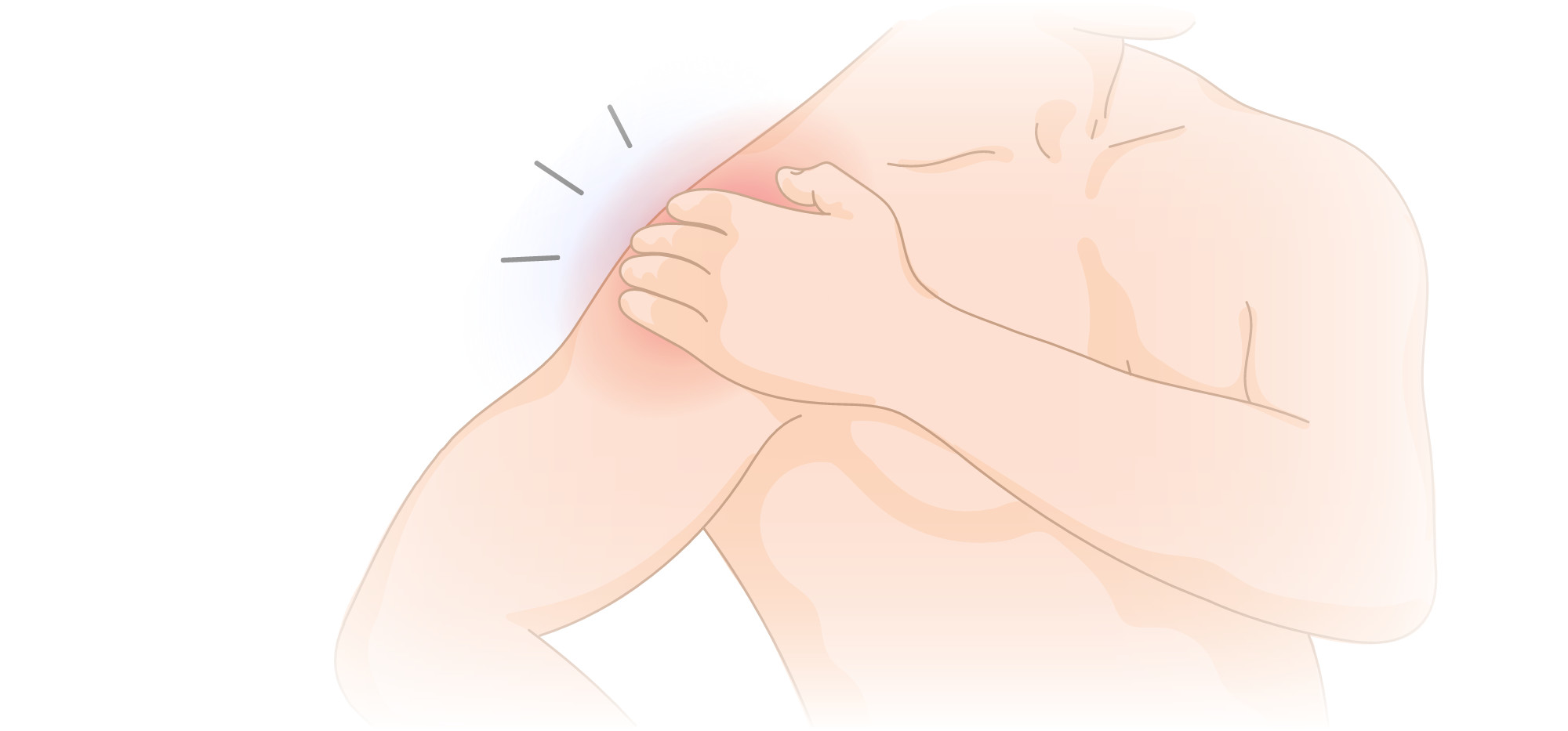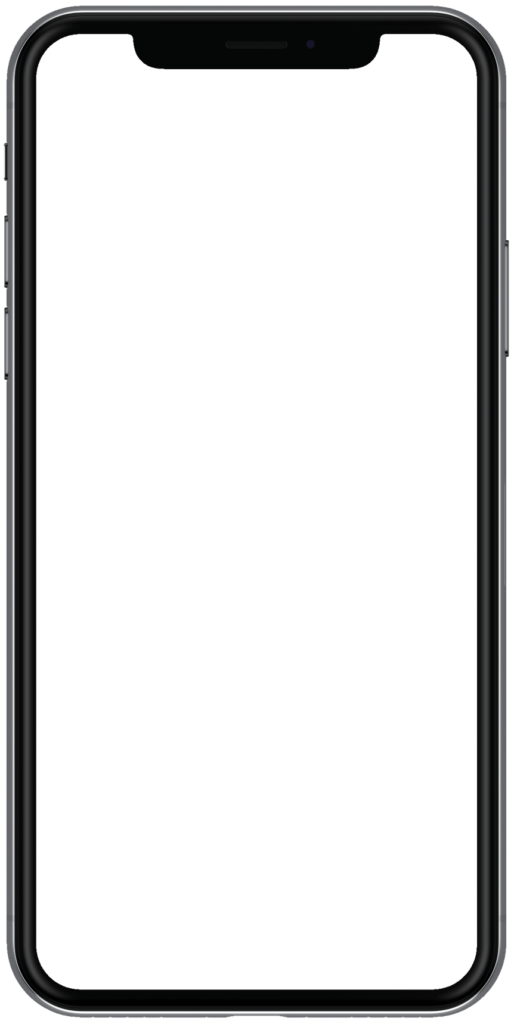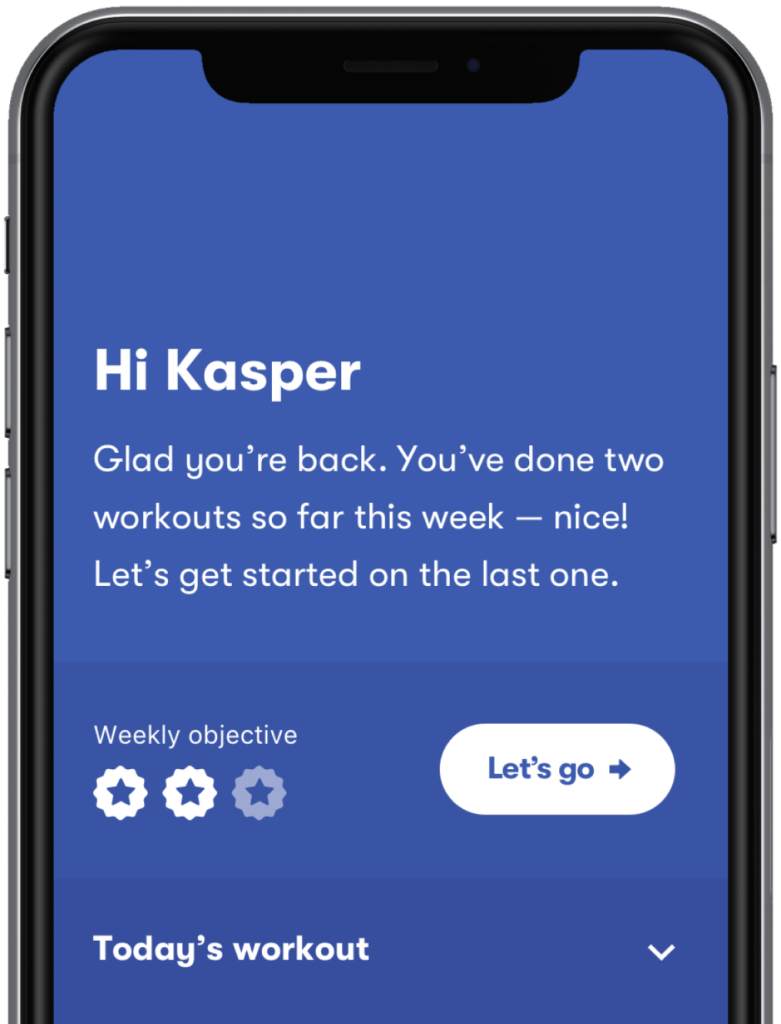Is your shoulder clicking when you move it? Or do you experience a popping noise when you lift your arm? What causes this noise, and should you be worried? Here we explain what you should look out for and what you can do to prevent and treat damage to your shoulder.
Content:
- Anatomy of the shoulder joint
- Conditions that can lead to crepitus in the shoulder
- When are these symptoms likely to occur?
- Treatment for clicking, cracking and popping in the shoulder
Grinding and clicking in a joint is often referred to as crepitus. It is thought that the sound comes from the formation of tiny gas bubbles in the fluid within the joint (the synovial fluid.) It can happen in any of your joints but is most common in your knees, fingers, and, of course, your shoulders.
So why is your shoulder clicking? What could it mean? Read on to learn more about your shoulder anatomy, some common and not so common shoulder conditions. We’ll then teach you some strengthening exercises and stretches, so you can help prevent your shoulders from going snap, crackle, and pop.
Looking for a solution that can help you get rid of the sounds or pain in the shoulder? Try Injurymap’s rehabilitation app
Anatomy of the shoulder joint
Your shoulder (in anatomical terms called the glenohumeral joint) is a ball and socket joint. A ball and socket mechanism enables the joint to have a high degree of flexibility and an extensive range of motion.
Similar anatomy can be seen in your hip joint. The upper arm bone, known as the humerus, connects into the socket of your shoulder blade (the scapula), which runs from your back around to just below your collarbone (your clavicle.) The arm is also held in place by ligaments, the tough, fibrous connective tissue that links bones together. A soft cartilage cup known as the labrum lines the socket and helps to hold your arm in place.
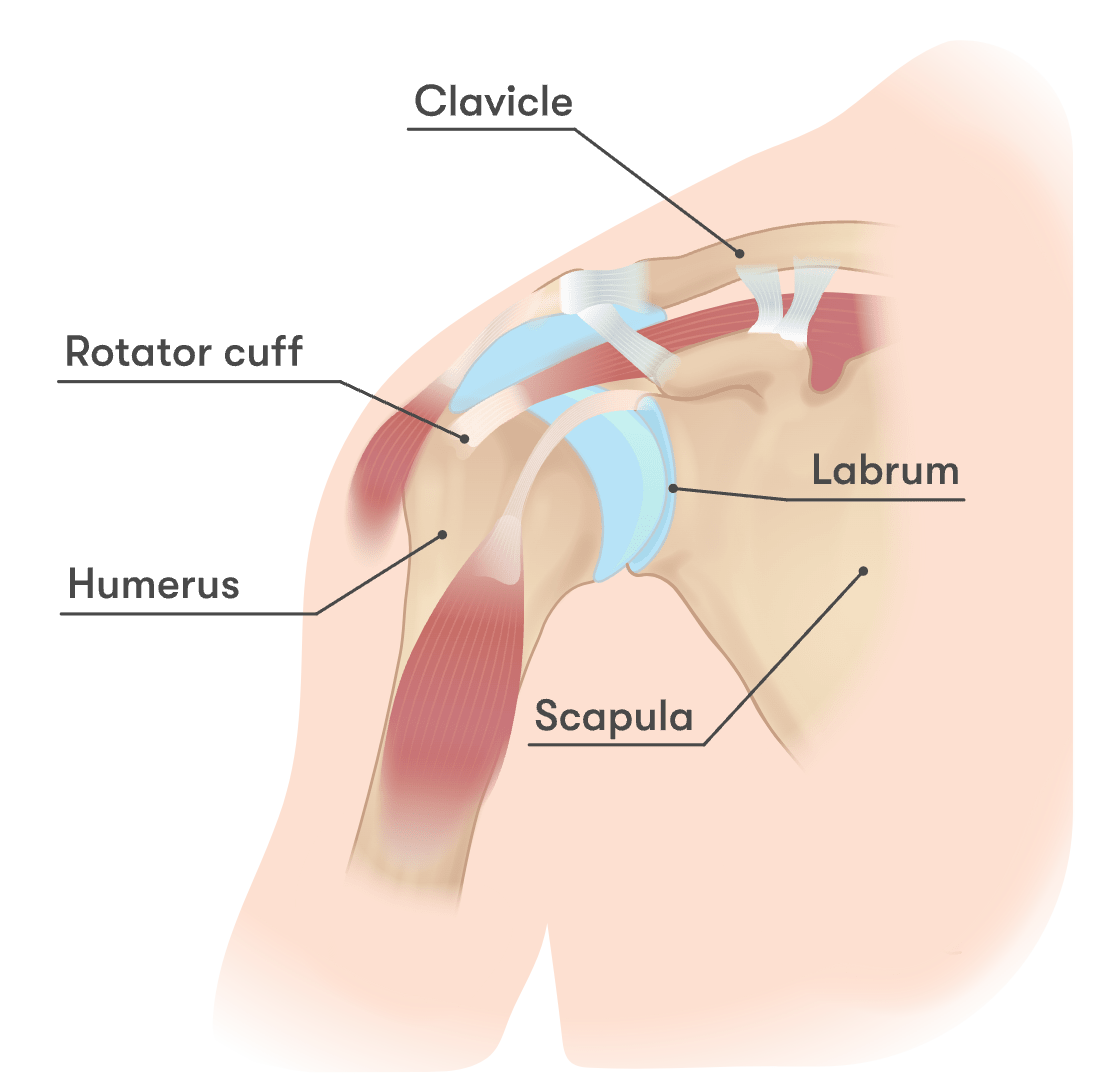
Shoulder ligaments are relatively weak and flexible. This laxity (looseness) allows for maximum mobility in the joint, which can move in many directions. However, it comes at the cost of stability. The joint relies on the muscles of the rotator cuff for support. These are the four muscles of the rotator cuff:
- Supraspinatus – which sits above the top edge of your shoulder blade
- Infraspinatus – positioned below the top edge of your shoulder blade
- Subscapularis – covers the underside of your shoulder blade
- Teres minor – a narrow muscle that runs from the outside edge of the shoulder blade up to the back of the upper arm bone

These muscles often work in conjunction with each other. Due to them being your prime shoulder movers, they’re prone to overuse and injury.
Muscle tendons can flick as they move over the bone, causing a popping noise. Tendons are the string-like structures that connect muscles to their supporting bone. When the tendons move over bone, they can click like guitar strings. If you have suddenly started experiencing one of these audible symptoms, then it may be worth having your shoulder assessed. Changes like this can be a sign that you’ve damaged one of the muscles or its tendons, so it may be worth having it investigated.
Clicking, popping, and cracking can be a nuisance. It can also be slightly worrying if you don’t know what the cause is. The good news is that it’s usually pain-free and harmless. But you should be aware that even though it might be painless initially, the sound could be indicative of a more severe shoulder condition. If you do start to experience pain along with crepitus, then be extra aware, as it may be a sign of a more severe injury or condition.
If your shoulder impairment is left untreated, it can turn into the chronic condition known as a “frozen shoulder”. In the medical field, this is called adhesive capsulitis, the shoulder capsule and joint become stuck with a glue-like inflammatory process. It can be quite painful and take a long time to recover.
Other signs that you should be looking out for are swelling, redness, or heat radiating from the shoulder. These symptoms can be a sign of something more serious occurring, such as an infection. If this is the case, you might want to consult a doctor.
Conditions that can lead to crepitus in the shoulder
Osteoarthritis
As you get older, the shock-absorbing cartilage in your joints wears down in a condition known as osteoarthritis. The joint loses the amount of cushioning in between the bones. Osteoarthritis can cause grinding noises – the sound of the bones rubbing against each other. The increase in friction can cause ache-like pain and stiffness. An added complication can be that nerves can become compressed in the decreased joint space.
Osteoarthritis is a widespread complaint that comes with age and overuse of a joint. It’s more prevalent if you work in an occupation involving repetitive strain to the shoulder and arms, e.g., painting, hairdressing, and farming. Ways to combat arthritis include maintaining a healthy weight, avoiding high impact exercises, and strengthening the surrounding muscles.
Rotator cuff tears
The muscles of the rotator cuff are put under large amounts of stress and are quite prone to tearing. They can tear partially or entirely as a result of age or general wear and tear. Once torn, the uneven surfaces can rub together, causing cracking noises. Pain can be quite sharp on movement.

Bursitis
Within the shoulder complex, there is a small fluid-filled sac, known as the bursa, that sits within the joint capsule. The bursa acts as a cushion and a shock absorber, helping the joint slide together upon movement. If it becomes inflamed through trauma or repetitive stress or strain, then it is known as bursitis.
With any swelling, there’s less space for everything to move, and structures can become tight, causing grinding. If you suspect bursitis, then try and avoid any aggravating movements to give it a chance to settle. You should also practice the standard anti-inflammatory protocol (ice and medication if needed).
Unhealed fracture
If you have a recent fracture, e.g., in your ribs or shoulder blade, that has not healed properly, it can produce clicking symptoms. In this case, the bone fragments moving against each other are to blame. This situation requires medical assessment, as you may require surgical fixation.
Labral tear
A tear to the labrum, which is the cartilage holding the shoulder together, can also result in crepitus. Age, overuse, or trauma can all cause the labrum to tear. However, these are often quite painful and may need surgical repair if pain persists. This pain is usually felt deep in the joint.
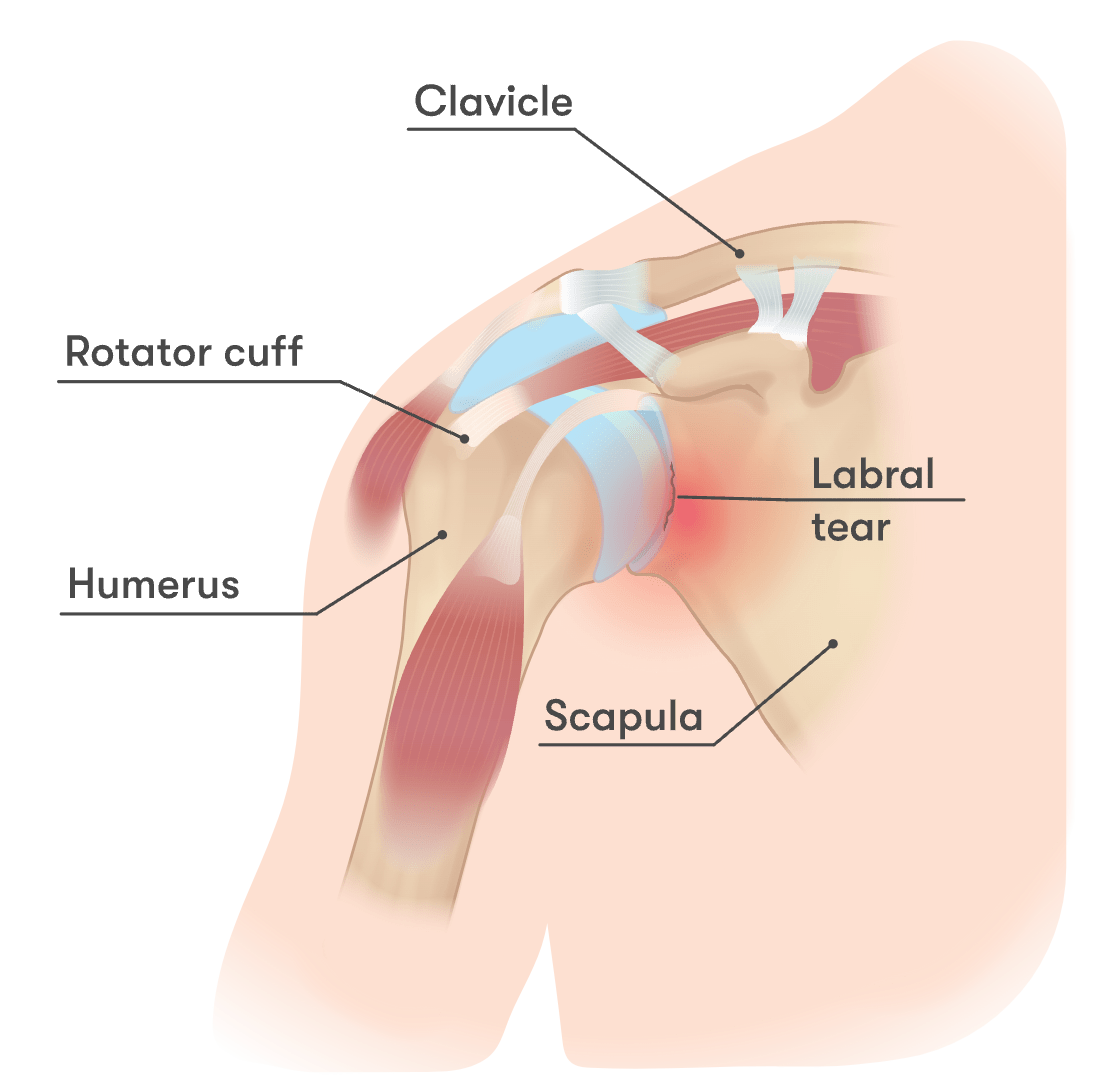
When are these symptoms likely to occur?
Crepitus most commonly occurs when your arms are lifted, especially above shoulder height. When you perform pushing movements, especially at the gym such as push-ups, bench press, or side raises. Other everyday activities can cause these noises as well, including throwing a ball or even something as simple as putting a handbag over your shoulder. If the frequency of your shoulder cracking increases suddenly or it occurs in the presence of pain, then it’s advised to seek medical consultation.
Imaging and Investigations
Sometimes it may be necessary to undergo tests to investigate the cause of the dysfunction further. Common investigations you may encounter include:
- Ultrasound
- MRI (Magnetic Resonance Imaging)
- X-rays
- Blood tests to assess for the presence of any infection
- Antibody test to check for the presence of any auto-immune disorder.
These will be ordered by your GP if deemed necessary. While uncommon, it may be useful to help eliminate these as a cause.
Treatment for clicking, cracking and popping in the shoulder
When you first visit a physiotherapist, they will conduct an assessment testing your range of motion across the joint as well as muscle strength. During your assessment, you will have different movements tested, helping to determine the exact type and location of pain and grade the injury.
If you sustained an injury or are experiencing pain, you should follow the RICER principle right away – for at least the first 48 hours.
- Rest
- Ice
- Compression
- Elevate
- Referral
The goal of RICER is to try and minimize any swelling and inflammation. It will also reduce any pain you may be experiencing. As much as swelling is painful and irritating, it’s your body’s way of immobilizing and protecting the injured joint.
Once the initial acute phase of 48-72 hours has passed, you can progress to the recovery and rehabilitation phases of treatment.
Other additional treatments you might find useful include:
- Yoga can be beneficial in several ways. It’s well-known for improving your flexibility as most yoga enthusiasts are quite pretzel-like. But it can also improve strength and stability around your joints. Its other relevant benefits are posture improvement and assistance with breathing and relaxation as well. These are important for stress-related shoulder and neck pain.
- Foam rolling is a method of releasing tight muscles. Rollers are inexpensive to purchase and it’s a treatment you can do at home.
- Massage is a very popular treatment to loosen up tight muscles. Just be aware that the muscles will become tense again if the underlying issue isn’t resolved.
- Heat packs or gels can be useful in relieving pain and muscle tension.
- Strapping of shoulders with sports tape or the use of braces can provide support for sports and other activities. In the long term, it is better to strengthen the muscles themselves rather than relying on tape. You can also use tape for postural cues, the tape is applied to hold your shoulder in the desired position, and if you move, e.g., slouch against it, the tape pulls.
